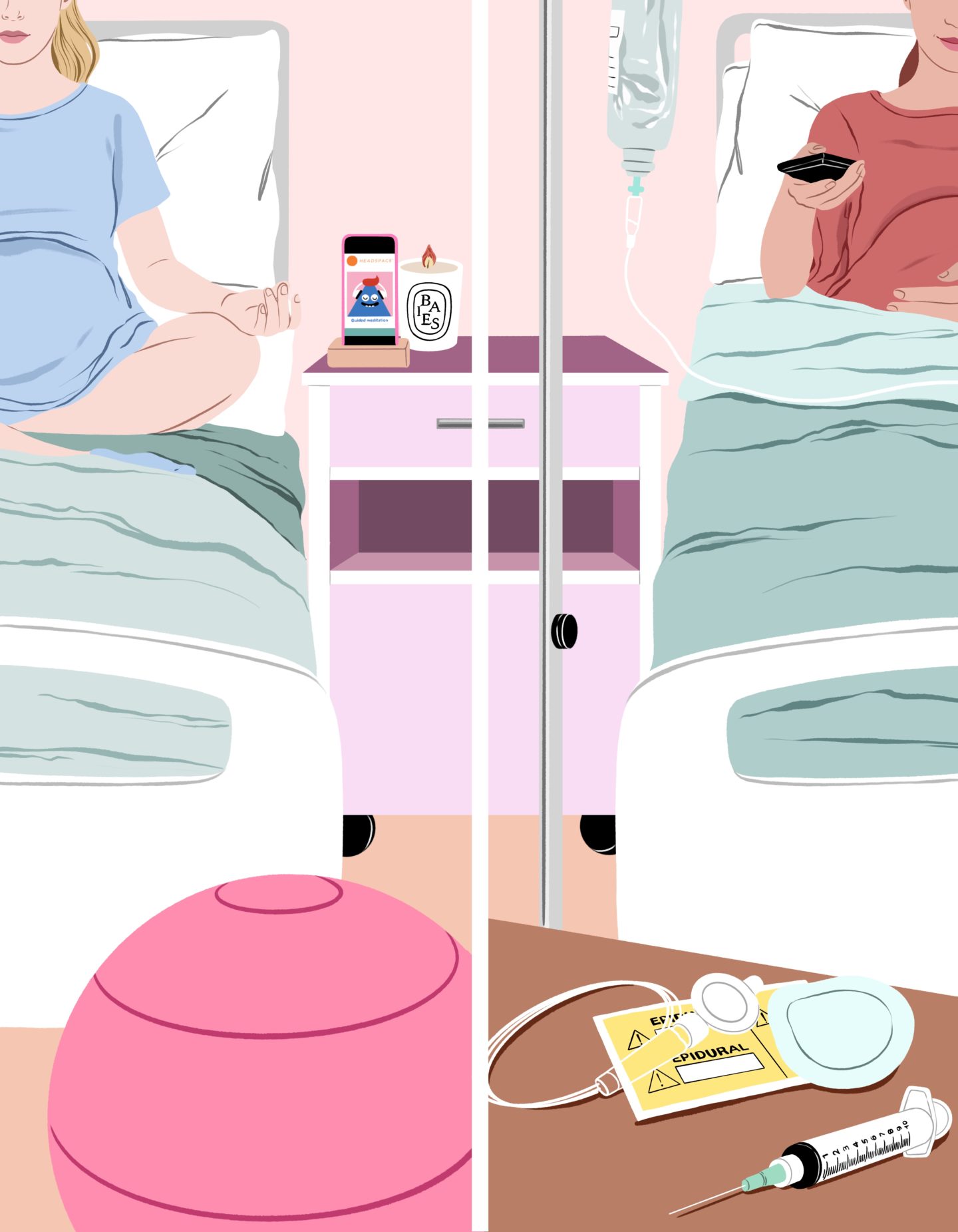Oh, girl. This is one of the most epic questions EVER. It’s right up there with, “What should I name my baby?” meaning WE CAN’T TELL YOU WHAT TO DO.
Here’s what we CAN tell you. We believe that every delivery experience is a “natural” one, from a planned C-section, to a home water birth by candlelight, to everything in-between. We don’t believe in guilt over getting epidurals, or any kind of judgement on the topic.
So we’ll break it down and let you decide. (But FYI, it sounds way gnarlier than it actually is).
Epidurals are one of the most commonly used forms of pain relief for labor in the United States. It delivers continuous pain relief to the lower part of your body, while allowing you to be fully conscious. If given properly, it can reduce sensation but it won’t cause a total lack of feeling ‘cause you gotta PUSH that baby out.
The epidural medication is delivered through a catheter. Basically it’s a very thin, flexible, hollow tube that’s inserted into a space just outside the membrane that surrounds your spinal cord + spinal fluid.
An anesthesiologist will come in to give you the epidural, and you’ll lie curled on your side or be seated hunched over as she cleans the injection site, numbs the area, then inserts a needle into your lower back. (This may sound painful, but it’s NOTHING compared to actual labor.)
She’ll then pass a catheter through the needle, withdraw the needle, and tape the catheter in place. At this point, you can lie down without disturbing the catheter, and medication can be administered through it on an as-need basis.
You’ll start to notice the numbing effect of this miracle drug within minutes after the first dose. You’ll receive continuous doses of medication through the catheter for the rest of your labor. You may also have the option of controlling your own dosing through a pump that’s connected to the catheter. The amount of medication you can give yourself is limited, so there’s little chance of overdose.
After you deliver your baby, the catheter will be removed. (If you’ve had a c-section, sometimes the catheter is left in to administer postoperative pain medication.) Having the catheter removed doesn’t hurt at all beyond the sting of having the tape pulled off.
If you know you want an epidural, but you’re not sure when you’re supposed to ask for one, many providers advise you to wait until you’re in active labor as it can slow labor down. However, studies have shown that starting an epidural in early labor (compared with later in labor) is not more likely to prolong labor or lead to a c-section or other interventions.
So it’s basically up to you. You can ask for one as soon as you arrive at the hospital, or you can wait and see. As long as the baby isn’t crowning, you can usually get an epidural at just about any point. And it’s still a totally natural way to give birth, because giving birth, no matter how it happens, is pretty damn natural to us.


